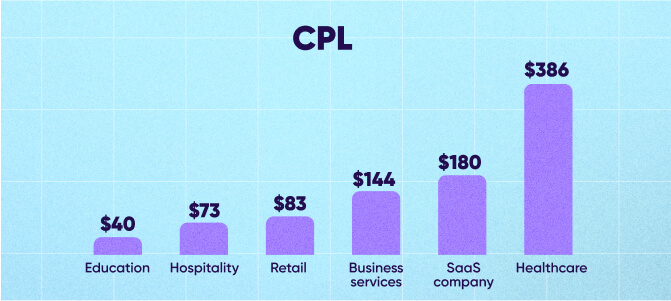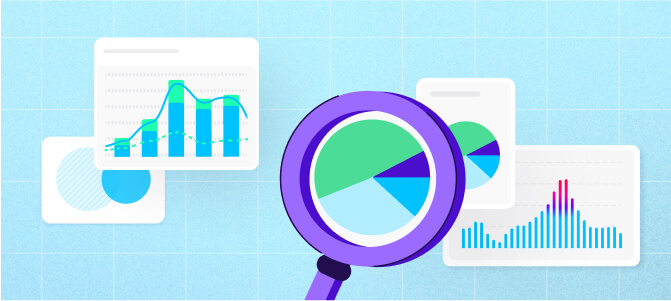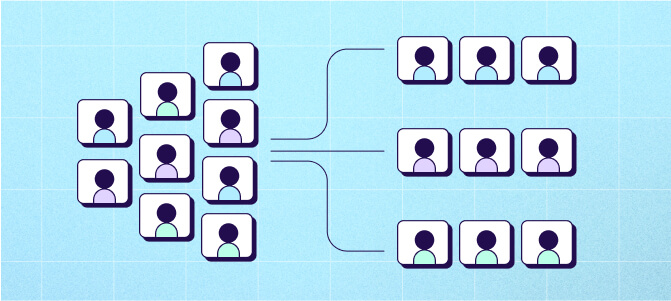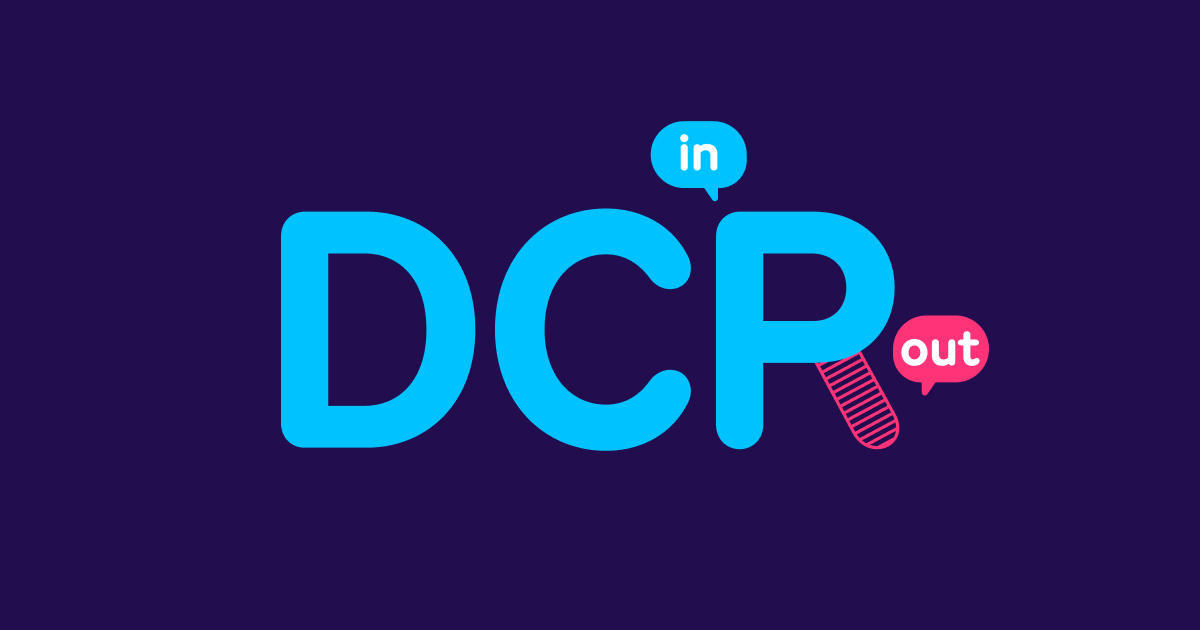
Cost per lead (CPL)
Cost per lead is a sales metric measuring the average cost to acquire a new business lead.
What is cost per lead (CPL)?

Cost per lead measures how much it costs a business on average to acquire one lead. A lead is a potential customer, either an individual or a company, who’s taken an action that indicates they’re likely to make a purchase. Typical actions include things like creating an account, requesting information, or adding items to a shopping cart.
Generally speaking, a lower CPL is considered better than a higher one.
Why is CPL important?
Monitoring your CPL helps your business identify which lead generation channels are most cost-effective, and which may need adjustments or a reallocation of resources. If your lead acquisition is too expensive, it might mean that your marketing strategy isn’t effective or that certain channels aren’t worth the investment.
When you track marketing attribution, you can analyze your channel-specific CPL. This lets you increase your investment in cost-effective marketing channels, while tweaking or discontinuing investment in channels that don’t deliver value.
CPL also helps you budget appropriately for your marketing campaigns. For instance, if your goal is to increase your leads by 50% in a quarter, you can use CPL to estimate how much to increase your marketing budget to reach your goal.
Additionally, you can use CPL to gain insights into other metrics, like cost per sale and customer lifetime value, to assess the health of your business.
How to calculate CPL
To calculate CPL, first choose the timeframe you want to measure. This is typically by month, quarter, or year. Next, calculate your total marketing spend for the period: this includes ad spend and administrative costs (in-house payroll, consultants, fixed costs, and so on) for marketing and outbound lead development.
Divide this by the number of leads you acquired in this period. You can clean your data to differentiate qualified leads from unqualified leads if you choose. (Qualified leads are those that meet the criteria most likely to result in a sale.) However you define it, this calculation will tell you the average acquisition cost for a lead.
To sum up, the formula for CPL looks like this:

CPL example 1
Let’s say that Company A has one marketer with an annual salary of $80,000. The company spends $40,000 on ad spend and sponsorships, and another $20,000 on other costs like video production.
If they bring in 2,800 leads in a year, then their CPL averages $50.

CPL example 2
Here’s a channel-specific CPL example. Company B spent $15,000 on a Google Ads campaign in Q2 and paid a digital marketing agency $3,600 to manage the pay-per-click campaign. As a result, the company gained 620 leads.

What is a good CPL?
There’s no absolute benchmark for a good CPL, but there are some guides. B2B leads typically cost more to acquire than B2C. A study by Sopro named $100 as an average CPL across industries, but don’t compare yourself too quickly without context.
To assess your number, you need to consider:
- The type of business you run
- Your industry
- Your lead-to-sales ratio
- Your customer lifetime value
A CPL should be lower than the value a sale brings into your company, or you’re losing money. For example, a $200 CPL would be too high for a consumer product worth $20, but would be justified for a B2B sale with a customer lifetime value in the thousands of dollars.
CPL benchmarks by industry
Each industry has different lead acquisition costs. Consider this sampling of industry CPLs from Sopro:
- Education: $40 CPL
- Hospitality: $73 CPL
- Retail: $87 CPL
- Business services: $144 CPL
- SaaS company: $180 CPL
- Healthcare: $386 CPL

CPL benchmarks by marketing channel
Like industries, marketing channels vary wildly by cost and effectiveness. Not every marketing channel is appropriate for every business or industry, but it’s worth exploring cost-effective marketing channels to lower your CPL.
Least expensive marketing channels:
- Referrals: $25 CPL
- SEO: $35 CPL
- Email marketing: $50 CPL
- Social media marketing: $65 CPL
Most expensive marketing channels:
- PPC: $175 CPL
- Direct mail: $250 CPL
- Cold calling: $300 CPL
- Events and trade shows: $1,000 CPL
CPL vs other metrics

The benefit of measuring your CPL is the insights it gives you into other areas of your marketing performance. These three metrics, while different from CPL, can be paired with it to give a fuller picture.
CPL vs CPA (Cost per action)
While CPL measures the cost of acquiring potential customers who show interest, cost per action (CPA) calculates the cost of specific actions like purchases or sign-ups. Analyzing both metrics together helps assess your lead quality, optimize campaigns, and determine return on investment (ROI) more effectively.
For example, if CPL is low but CPA is high, it may indicate issues with the conversion process or targeting. You can then make adjustments to improve overall campaign performance.
CPL vs CPC (Cost per click)
CPC measures the cost your business incurs each time a user clicks on your online ad. This metric is common in PPC and display ad campaigns. Like CPL, CPC helps you analyze your ROI and optimize campaigns.
One difference is that CPC evaluates the effectiveness of ad campaigns in driving traffic, while CPL gives insight into the quality of leads generated from those campaigns. Higher CPC may indicate competitive ad spaces or inefficient targeting, while higher CPL may suggest you need to optimize your lead generation strategies.
CPL vs CPS (Cost per sale)
Cost per sale measures the total cost of converting a lead into an actual sale or customer. By comparing CPL with the number of leads that convert into sales, you can calculate the conversion rate and assess the effectiveness of your sales process.
When you identify areas where leads are dropping off or conversion rates are low, you can improve your performance with data-backed decisions.
How to lower your CPL: Best practices
Lowering your cost per lead takes a sustained effort over time. A smaller CPL can be achieved one of two ways: lowering your marketing spend or increasing your leads. Use the following strategies to improve performance and bring your CPL down.
1. Targeted audience segmentation

Tailoring your marketing efforts to specific audience segments can significantly reduce CPL. When you advertise to too broad an audience or use the wrong channel, you waste marketing spend on someone outside your ideal buyer persona. By understanding the demographics, behavior, and preferences of your target audience, you can lower your CPL.
2. Personalized messaging
As you hone in on your ideal buyer with audience segments, deliver personalized messaging for a greater impact. HubSpot found that three-quarters of marketers believe a personalized experience increases sales and the likelihood of a contact becoming a repeat customer.
3. A/B testing
Test different elements of your campaigns such as ad copy, visuals, call-to-action buttons, or landing page layouts to identify what resonates best with your audience. A/B testing lets you make data-driven decisions that optimize performance and drive down CPL over time.
4. Alternative marketing channels
Pay-per-click advertising costs have gone up significantly in recent years – Wordstream found that Google Ads CPL rose 20% in 2023. To avoid the sticker shock of paid ads, explore non-traditional marketing tactics like email marketing, public relations, organic social media, and content marketing to attract inbound leads.
5. Marketing automation
Marketing automation tools streamline lead generation processes by automating repetitive tasks such as email marketing, lead nurturing, and scoring leads based on their interactions with your content. This not only saves time but also helps lower CPL by targeting high-quality leads more efficiently.
Key takeaways
- CPL, or cost per lead, indicates the average cost to your business of acquiring a new lead (potential customer).
- Calculate CPL with this simple formula: Total marketing costs / Number of leads = CPL.
- A good CPL varies by industry and channel, but should always be lower than the value a sale brings in.
- Monitoring CPL helps businesses identify cost-effective lead generation channels, optimize marketing budgets, and gain insights into overall marketing performance and ROI.
- Comparing CPL with cost per action, cost per click, and cost per sale gives a fuller picture of marketing effectiveness, enabling you to optimize campaigns.
- Strategies such as targeted audience segmentation, personalized messaging, A/B testing, exploring alternative marketing channels, and leveraging marketing automation can help reduce CPL over time.



